If you aren't sure what PBX stands for and what exactly it is, you are not alone. In this blog, we'll discuss all the ins and outs of PBX systems and how they have help enhance today's mobile workforce.
PBX systems in the earlier days
To put it in simple words, PBX stands for Private Branch Exchange. A PBX system is a private telephone network that is mainly used within a business setting and it allows users to talk to each other, internally or externally. This means that the employees can communicate with each other by calling each other via their extension number or they can call external parties such as clients, prospective clients and other stakeholders involved in the business.
Traditionally, PBX systems operated through physical handsets that are connected by multiple cables. This means that if a business has hundreds of employees, they would need hundreds of separate lines to connect everyone with each other. Those hundreds of lines are connected to a literal "box-on-the-wall" that can be located on the business's premises. The business is then being billed by their local phone company for the use of all these lines, just to have their employees talk to each other. Paying for hundreds of individual phone lines is obviously not cost effective and it can spiral into an absolute nightmare, for both the customer and the business, when not maintained properly.
How PBX systems improved ever since
Now adays PBX systems are referred to as Cloud PBX systems. Don't be scared of by word "cloud". The principle stays the same but the network through which it runs changes. Instead of working through hundreds of cables, this system works through the internet. While traditional PBX systems use the "box-on-the-wall" method, Cloud PBX systems use the cloud. (The cloud is mega servers located in other countries but you can think of it as the data is being stored in the air) By using the cloud, it dramatically reduces the business's running costs.
Now adays PBX systems are referred to as Cloud PBX systems. Don't be scared of by word "cloud". The principle stays the same but the network through which it runs changes. Instead of working through hundreds of cables, this system works through the internet. While traditional PBX systems use the "box-on-the-wall" method, Cloud PBX systems use the cloud. (The cloud is mega servers located in other countries but you can think of it as the data is being stored in the air) By using the cloud, it dramatically reduces the business's running costs.
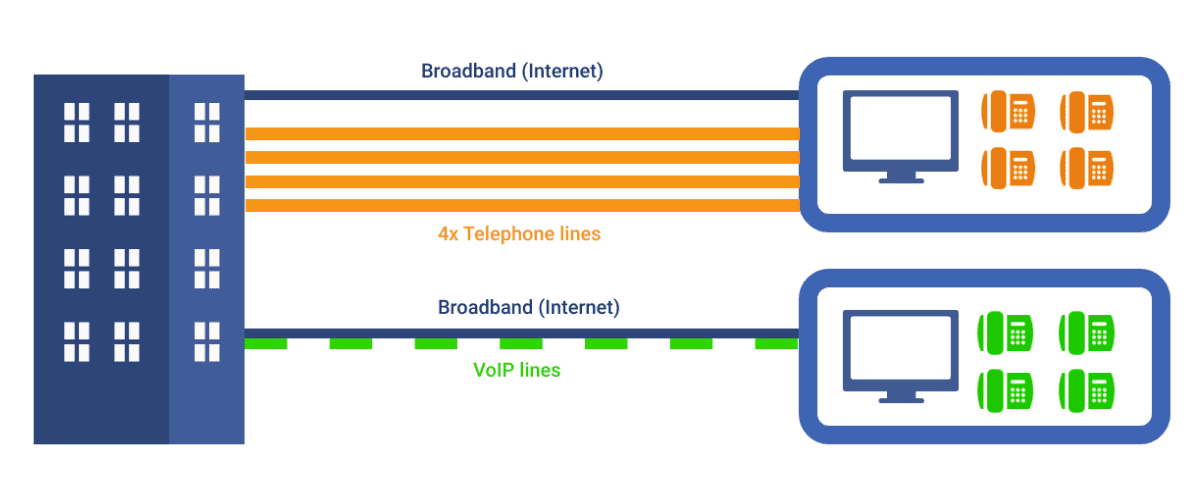
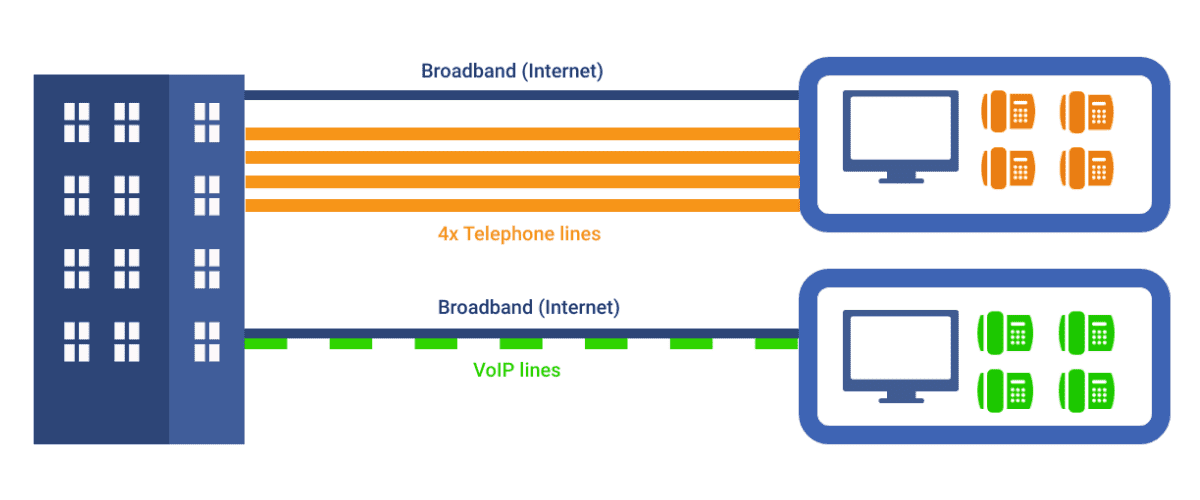
The diagram above roughly shows how Cloud PBX systems works. It uses your broadband connection to connect your devices to the cloud and in this 'cloud' there is a system that acts the same as the "box-on-the-wall".
Cloud Phone systems (voice calling) is an essential component of unified communications (along side messaging and web conferencing). These 3 components aren't the only components that make up unified communications but they are the most important. A Cloud PBX system essentially turns any device with internet access into a potential telephone. And with unified communications, you'll be able to use one device to to do multiple tasks at once including: voice/ video calling, emails, file sharing, messaging and more.
So in short, Unified communications includes the following:
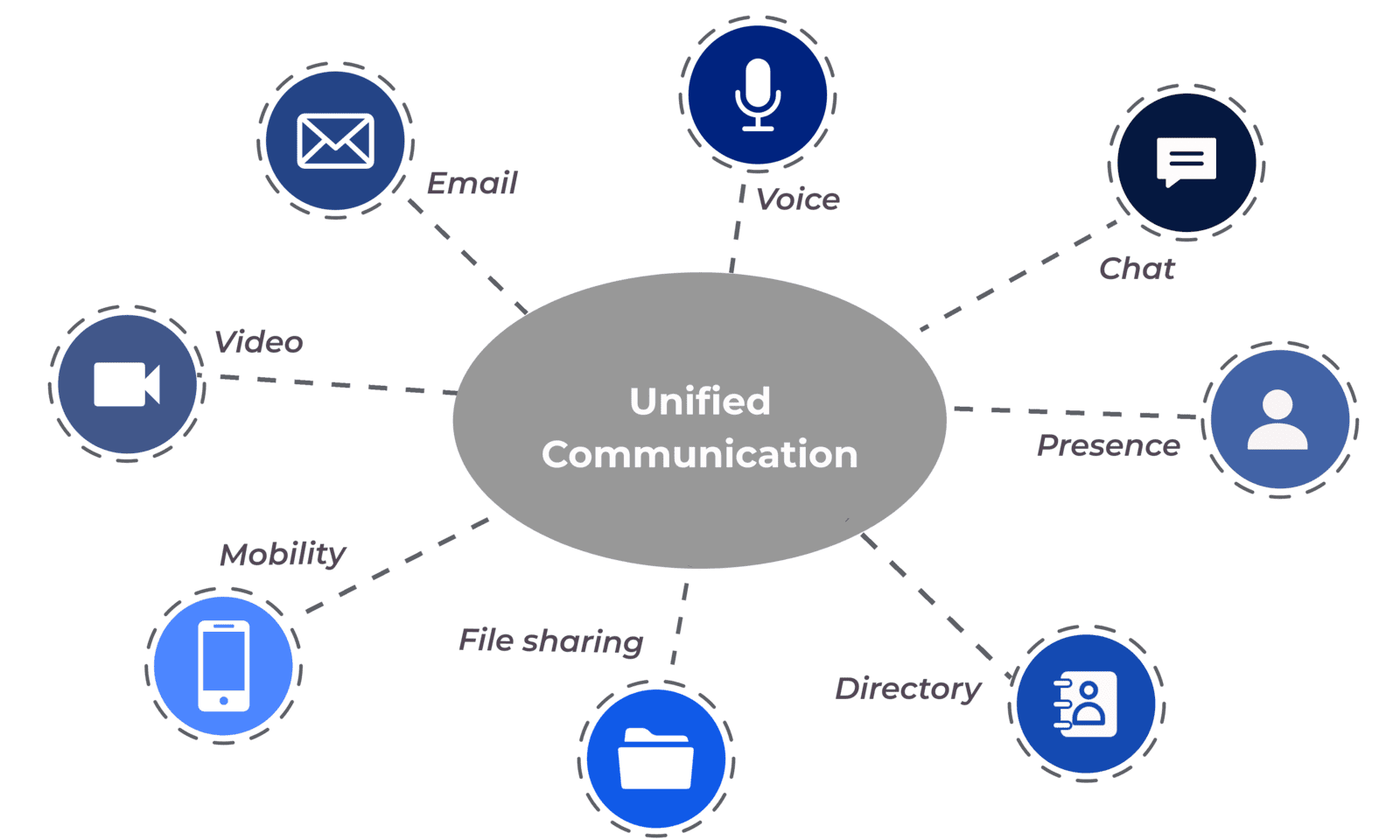
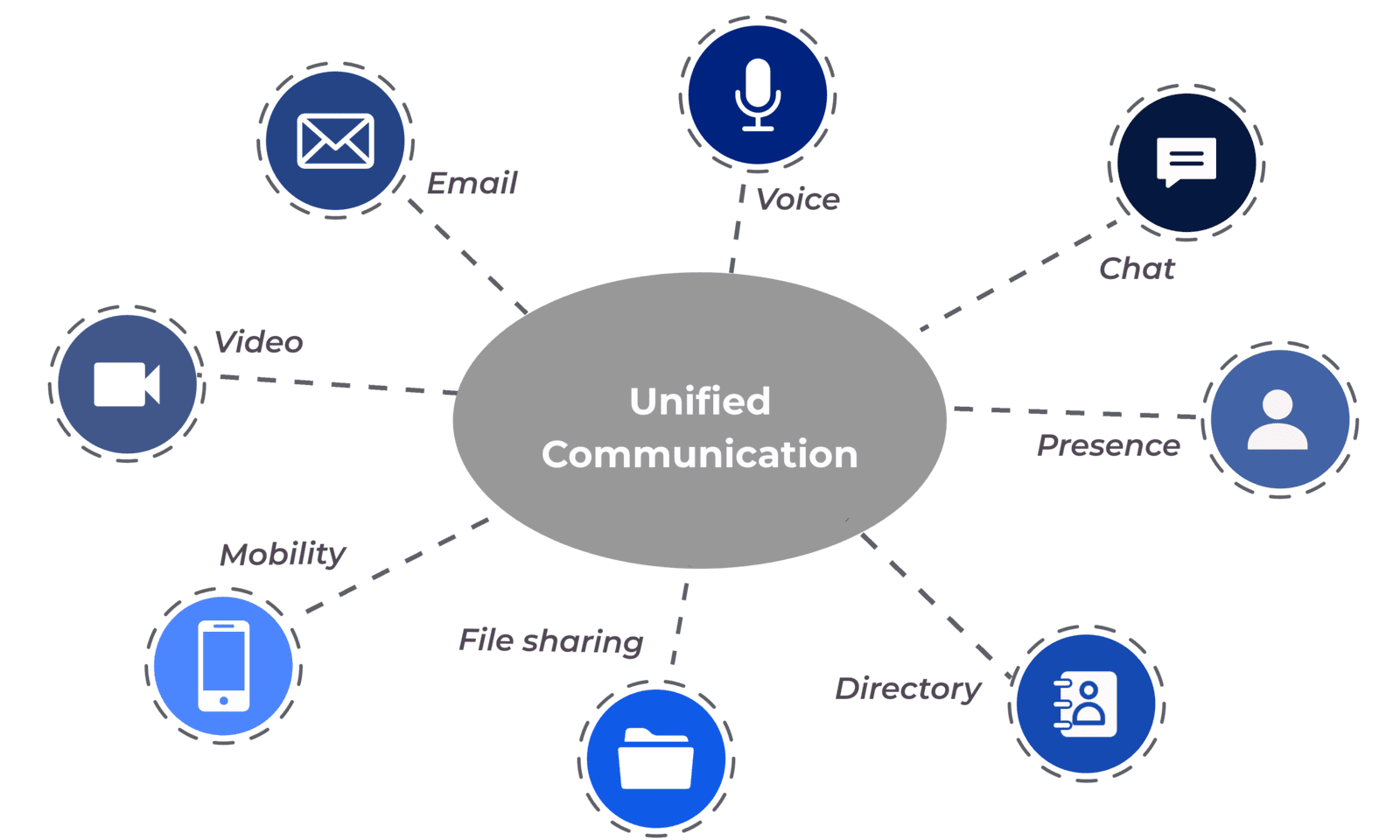
Unified communications in a workplace
Unified Communications makes overall communication within a workplace easier and more reliable and it helps to drive greater collaboration between team members. Virtual collaboration is essential to the digital workforce and Unified Communications can help any business to level up in many ways.
Unified Communications does have quite a few advantages you can benefit from.
For the most part, it encourages you to participate in real-time communication with customers, employees and co-workers through your preferred channels. It allows you to make or receive unlimited calls with other app users and you don’t have to install an additional app to be able to use it (these calls can be either video or voice calls). This feature will ensure that your team can stay in touch at all times, no matter where they are. Along with this, Unified Communications also allow for screen sharing while on a call or when presenting at a visual/ audio conference. It is easier to show your team members what you mean instead of a long verbal description.
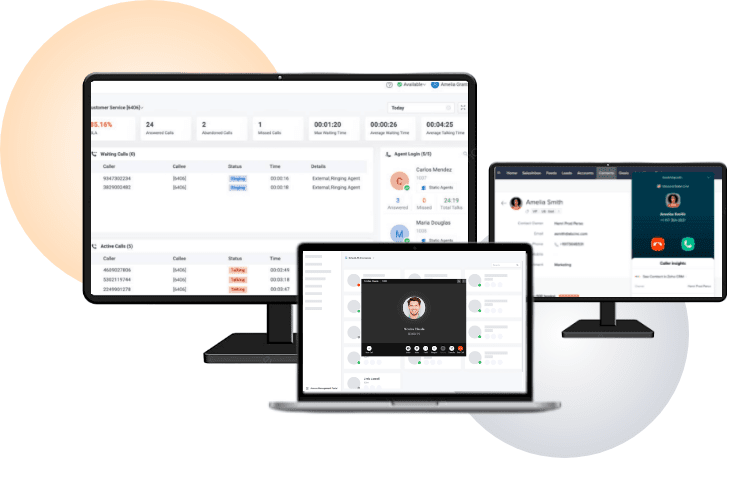

To summarise the differences between On-site traditional PBX and modern Cloud PBX.
Now that we've looked at how Unified Communications are integrated in PBX systems, we should recap the different PBX systems.
| On-Site traditional PBX systems | Cloud PBX systems |
|---|---|
| Uses copper cables to connect. | Uses the internet to make and receive calls. |
| Restricted to one location. | Flexible in terms of location. |
| High setup and maintenance cost. | More cost-effective. |
| On-Premises hardware installation. | No on-site hardware. |
| Only allows for voice calling. | Allows for voice and video calling . |
| On- site PBX |
|---|
On-Premises hardware installation. Uses copper cables to connect. High setup and maintenance cost. Restricted to one location. |
| Cloud PBX |
|---|
No on-site hardware. Uses the internet to make and receive calls. More cost-effective. Flexible in terms of location. |
It is time to upgrade your PBX System
The way we work has changed so much in the past few years. The question is: Shouldn’t your PBX system keep up with you? The DSL Telecom's Cloud Phone System will reduce costs and help you and your teams connect with any device, from anywhere, even on the go with all the latest Unified Communications features.
